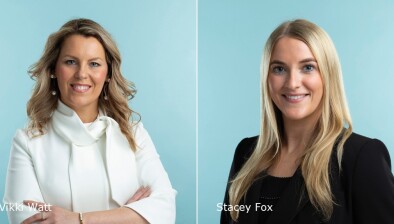Blog: My vision for Scotland’s Energy Efficiency Programme

To coincide with the announcement of Scotland’s Energy Efficiency Programme pilots, which is expected any day now, Changeworks is developing a series of insight papers to inform the debate on how to best deliver the programme.
To set some context, imagine this: it is the summer of 2020 and the Scotland’s Energy Efficiency Programme (SEEP) is in full swing. Earlier in 2017 the primary objective for SEEP was set to bring all of Scotland’s homes and business up to an EPC rating of C or higher by 2025. With 1.6 million homes and 100,000 businesses needing upgrading it was acknowledged as an ambitious goal with the benefits in reducing carbon emissions, tackling fuel poverty and local employment clear for all to see.
Low Carbon Living
A delivery model for success was developed following a number of pilots and is now running in over 250 different Low Carbon Living areas across Scotland. A typical living area covers 5,000 homes and the businesses located in the area – large enough to achieve economies of scale and to justify local trades to skill up, yet small enough to be manageable and retain community focus. Low Carbon Living is intended to be a long term approach to fuel poverty and carbon reduction with the installation of measures spread over, say, three years. This gives sufficient time to build community and business interest, engage with everyone and for the early adopters to inspire the late majority so that all the homes and business meet the targets set. Local authorities are playing a key strategic role, recognising that building partnerships is vital to successful programme delivery.
Energy masterplan
So what happens in an individual area? Ensuring that local communities and businesses are at the heart of the programme a local energy vision for their area is developed with their involvement. Work starts with the creation of an energy masterplan: a detailed technical picture of the buildings in the area; the energy efficiency work required; how people use energy; the energy infrastructure and potential for renewables.
On the technical side clear specifications are available for the vast majority of buildings, developed with input from manufacturers and experts in energy efficiency, such as Home Energy Scotland, BRE (Building Research Establishment) and Historic Environment Scotland. Suitable products are identified, from insulation measures to secondary glazing. New products for hard-to-treat Scottish properties are piloted and fully evaluated. The local planning department is on board and simple procedures are in place to obtain building warrants and other consents around listed buildings and conservation areas, when and where necessary.
Managing the programme
A trusted intermediary, such as Changeworks in some areas, comes in to action as the managing agent for the energy efficiency programme. The needs of people are at the forefront of all delivery when working in people’s homes and workplaces.
A range of funding packages is available, grant funding for those in fuel poverty, equity release and loans for others. Contractors for the grant funded programmes are procured using a framework that ensures support of local jobs. Local contractors take part in the training programme so that they are fully up-to-date with best practice for energy efficiency works and understand how to support householders and businesses to get involved in Low Carbon Living.
Householders and businesses that are not covered by the grant funded programmes have full access to both the framework contractors and local contractors skilled in the works, providing comfort on both quality and price. Independent quality assurance is integral to the grant funded programmes but also available to the able-to-pay market.
In the first year of the programme the grant funded external wall works created a visible presence of work being carried out. As part of the programme, community groups and local councillors are supported to encourage householders and businesses to take part. Independent energy advice is provided by Home Energy Scotland and local services and groups integrate the programme in to their services. Positive word-of-mouth amongst neighbours is particularly important, endorsing benefits of the work and trustworthiness of the contractors.
Enabling people to use energy effectively
An essential element of the programme delivery is ensuring that householders and businesses make the most of energy efficiency improvements and their heating systems. Engagement activities take place to ensure people know how to use their heating controls effectively. All householders and business are included regardless of whether or not they are having energy efficiency work carried out.
Momentum for change
The enthusiasm and level of activity in the Low Carbon Living areas are inspiring communities and business to look at opportunities for further action. The external wall insulation programme has resulted in a new pride being fostered in the area; people are warmer in their homes and less concerned about their fuel bills. Local building firms which took on several young apprentices are looking to expand their work to the neighbouring area. New projects are being considered, such as involvement in community owned renewables, a locally owned Energy Supply Company (ESCo), building a low carbon transport hub and introduction of district heating.
Active regional hubs have been developed to enable areas to learn from each other. An established system for monitoring and evaluation means lessons are being learned early and successes heralded. This is all part of the ongoing activity to ensure that Scotland meets its carbon reduction targets.
I have no doubt my vision for SEEP will continue to be refined and other delivery models developed as we approach the 2018 launch. I’d welcome your thoughts on my vision and what’s needed to ensure SEEP is a success. Leave comments below or send me an email.
















